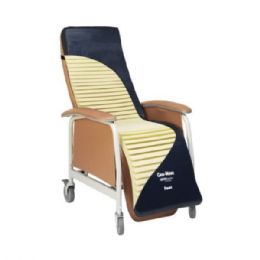



.jpg&newheight=260&quality=80)






















Positional care recliners can be comfortable enough for a good night’s sleep, maneuverable for caregivers, sturdy and long lasting, and can complement any décor. Styles and uses vary depending on what features and attachments are added. Nursing homes, home health care providers, doctor’s offices, hospitals and clinics use positional care recliners for a variety of reasons. They can also be used in dialysis, blood collection, respiratory and cardiac care.
What are the Features of Positional Care Recliners?
Positional care recliners in the upright position can be used as a wheelchair to comfortably move those who are unable to walk. They are narrow enough to fit through most doorways and hallways to maneuver easily. They may also have built-in trays that can be used while eating, and healthcare providers can use them when administering medications, then the trays can be stowed away on the side of the chair.
The chairs can offer ergonomic components, such as when upright, its contoured back provides lower back and lumbar support. The headrest can be adjustable and provide neck support and comfort even in the reclined position. Its ergonomic features allow people to enjoy activities while in a seated position and to be more comfortable for a longer period of time. When needing to stand, the foot rest can easily be pushed under the chair.
The recliner’s back can fully recline, which can be a necessity for those recovering from physical trauma or surgery. In this case, it can be a transportable hospital bed. If the doctor orders restraints to prevent someone from falling during sleep or to keep a mentally ill person from wandering off, recliners with built-on straps can be used.
Positional care recliners have a foot elevation feature. Some medical conditions require elevating the feet to help healing, such as in the treatment of edema, bone fractures, and leg fatigue. When seated for a long period of time, elevating the legs can promote blood circulation. The casters allow for simple movement and security so they can be locked into place to keep the chair from freely moving when unattended.
Hulet Smith, OT
Rehabmart Co-Founder & CEO
lb